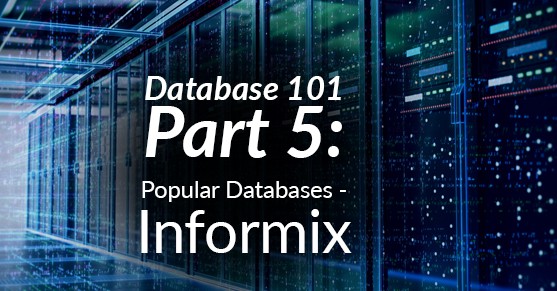Informix is an RDBMS, coincidentally started its life from a company by the name of Relational Database Systems or RDS. The database product was acquired by IBM in 2001 and is now fondly referred to as IBM Informix. Informix is ideal for situations where minimal database administration efforts are required. It is generally considered to provide stable uptime as well as high transaction throughput. It also provides data type extensions which are not included in the basic SQL specification. Time series and spatial data types are available in the current versions which enable not only optimized storage for the extended data types but high performance query models as well. XTIVA has many clients still using Informix for their mission critical environments and over the years we have had several calls from people that found an unknown Informix server that was running unattended for quite a while.
The Informix server supports the object-relational model, which has permitted IBM to offer extensions that support data types that are not a part of the SQL standard. The most widely used of these are the time series and spatial extensions, which provide both data type support and language extensions that permit high performance domain specific queries and efficient storage for datasets based on time series and spatial data.
Informix is generally considered to be optimized for environments with very low or no database administration, including use as an embedded database. It has a long track record of supporting very high transaction rates and providing uptime characteristics needed for mission critical applications such as manufacturing lines and reservation systems. Informix has been widely deployed in the retail sector, where the low administration overhead makes it useful for in-store deployments.
With the ability to deeply embed Informix in gateways and routers, time series support, small footprint, and low administration requirements, Informix is also targeted at Internet-of-Things solutions, where many of the data-handling requirements can be managed with gateways that embed Informix and connect sensors and devices to the internet.
Informix is available in many editions to meet your licensing needs, and XTIVIA can help you support and license all of them.
- Editions (presented alphabetically, list subject to change at IBM’s whim):
- IBM Informix (12.10.xC1 – 12.10.xC9)
- Developer Edition (and Advanced Edition)
- Enterprise Edition (and Advanced Edition)
- Express Edition (and Advanced Edition)
- Innovator-C Edition
- Workgroup Edition (and Advanced Edition)
- Other products:
- Informix Client Software Development Kit (version 4.10.xC1 – 4.10.xC9)
- Informix Connect (version 4.10.xC1 – 4.10.xC9)
- Informix JDBC Driver (version 4.10.JC1 – 4.10.JC9)
- Data Server Driver for JDBC and SQLJ (version 3.59)
- Data Server Driver for ODBC and CLI (version 10.1.2)
- Data Server Provider for .NET (version 10.1.2)
- DataBlade Developers Kit (DBDK) (version 4.20.xC1)
- Informix BladeManager(version 4.20.xC1)
- Informix OLE DB Provider (version 4.10.xC1 – 4.10.xC9)
- Informix Warehouse Accelerator (version 12.10.xC1 – 12.10.xC9)
- Informix SQL Warehousing Tool (supported by 11.50.xC3 and later versions)
- IBM Data Studio (3.2 – 4.1)
- IBM Informix (12.10.xC1 – 12.10.xC9)
- High Availability:
- Informix High-Availability Data Replication (HDR), Enterprise Replication
- Replication:
- Transactional replication, HDR, Shared Disk (SDS) secondary, and Remote Standalone (RSS) secondary
- Operating System:
- Linux, Unix, AIX, HP-UX, Solaris, Microsoft Windows, and MacOS
- Cloud:
- You can run IBM Informix in a number of computing instances for the cloud or you can use the cloud vendor supplied managed instances below. Whichever direction you take your cloud initiatives, XTIVIA’s experienced experts can help you build, tune, and manage your investment.
- IBM Cloud Informix on Cloud
- HCL’s Azure Virtual Machine Image for Informix
- HCL’s Amazon Machine Image (AMI) for Informix
- You can run IBM Informix in a number of computing instances for the cloud or you can use the cloud vendor supplied managed instances below. Whichever direction you take your cloud initiatives, XTIVIA’s experienced experts can help you build, tune, and manage your investment.
- History:
- In 1981, RDS, Inc. released Informix (INFORMation on unIX) and by 1986 as the RDBMS market grew, they changed their name to Informix Corporation. They experienced great success with acquisitions and product development until 1997 when the company was severely shaken by fraud and illegal insider trading. Between ’97 and 2000, Informix rebuilt their image and network with solid products and significant acquisitions including data companies like Red Brick Systems and Ardent. Informix was rebranded as Ascential Software following IBM’s purchase of the Informix database subsidiary, Informix Software, in 2001. In 2005, IBM fully acquired Ascential Software, and in 2017 the organization partnered with HCL in a 15-year intellectual property license to co-develop, support, and market Informix Software.

